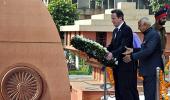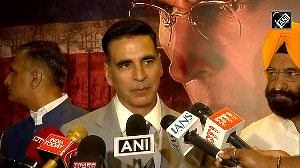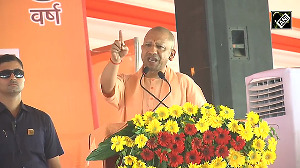It took Udham Singh 21 years to avenge the massacre of Jallianwala Bagh.
And 34 years for the Hero's remains to return to India after his execution in a British prison.

In the early hours of the morning in a London prison ground in July 1974, the remains of an Indian freedom fighter were quietly being exhumed.
The old coffin was dug out from one of the graves in the prison yard. The bones were transferred to a new casket and driven to London's Heathrow airport.
The coffin was transferred into an Air India flight bound for New Delhi.
Thirty-four years after Sardar Udham Singh was hanged for assassinating Michael O'Dwyer, the lieutenant governor of Punjab, to avenge the Jallianwalla Bagh massacre on April 13, 1919, he finally landed in a free India.
The martyr's return is captured in the book The Amritsar Massacre, Twilight of the Raj by Alfred Draper, first published in 1981.
The remains were received by then foreign minister Sardar Swaran Singh, Dr Shankar Dayal Sharma, then president of the ruling Congress party, and Giani Zail Singh, then chief minister of Punjab. Both Dr S D Sharma and Giani Zail Singh went on to be Presidents of India.
Draper writes that the casket was draped in the Indian flag, decked with flowers and taken to Kapurthala House where then prime minister Indira Gandhi paid homage.
Newspapers carried articles on the Jallianwala Bagh massacre and excerpts of the revolutionary leader's speech delivered in court during his 1940 trial which had been suppressed by the British government.
V K Krishna Menon -- who was removed as India's defence minister during the 1962 War with China -- was one of the lawyers in Udham Singh's defence team at the Old Bailey.

Udham Singh's coffin was then taken by road from Delhi to Amritsar, crowds gathered along the route to pay respects.
The casket lay in rest in Jallianwala Bagh where on the day of the massacre, Udham Singh worked as a water bearer. He had given the last sip of water to many as they took their final breaths and carried bodies upon bodies.
'Men and women wept unashamedly for Udham Singh who had avenged the dead and wounded with his own blood,' wrote Draper.
The casket was then taken to his village Sunam in Sangrur district for cremation. The ashes were scattered in the Ganga and Sutlej. Some of the ashes were put in various urns. One of the urns is preserved in the Jallianwala Bagh museum.
Udham Singh's house was later designated as a museum.

Udham Singh was 20 when General Reginald Dyer blocked the exits of Jallianwala Bagh and ordered his troops to open fire at the unarmed crowd.
Punjab was under the control of Michael O'Dwyer, the lieutenant governor, when Indians protested against the Rowlatt Act which gave the British the authority to arrest anyone without reason.
Udham Singh was an orphan living in a hostel in Amritsar at that time. Enraged with the killings, he swore revenge and became a committed revolutionary.
He travelled to Germany, the USA, Egypt, Ethiopia, Russia and England under different aliases to continue his revolutionary activities.
He worshipped Bhagat Singh and Draper writes that Udham Singh called himself desh-bhagat (Disciple of Bhagat).

On March 13, 1940, Udham Singh attended a lecture at Caxton Hall, London, where the introductory speech was to be given by Michael O'Dwyer.
Udham Singh -- dressed in a suit as he usually did -- was seated in the front. He fired six shots, killing O'Dwyer on the stage.
One of the doctors who attended the dying O'Dwyer, Draper reports, was Dr M R Lawrence, whose brother was T E Lawrence, famously known as Lawrence of Arabia.
Udham Singh told the police his name was Mohammad Singh Azad to exemplify Hindu-Sikh-Muslim unity. His real name was only known later by the authorities.
He was lodged in Pentonville prison where he went on a 41-day hunger strike during his incarceration afer religious books sent to him were not handed to him by prison authorities.

According to Draper's account when the judge asked if Udham Singh had anything to say about why he should not be sentenced to death, he took out a sheaf of papers, put on his glasses and read aloud.
Among what he said in court were the words: 'For 21 years I have been trying to wreak vengeance. I am happy I have done the job. I am not scared of death -- I am dying for my country.'
Udham Singh wrote only one letter from the death cell to the secretary of a gurdwara asking for the Guru Granth Sahib, as per Draper.
On July 31, 1940 he was hanged and buried in an unmarked grave below the prison walls.
A request from the gurdwara to return his body so that it could be taken to India was curtly refused.
The request was granted 34 years later after Indira Gandhi interceded with the then British government.
Udham Singh, the Revolutionary Hero, was finally home.










 © 2025
© 2025